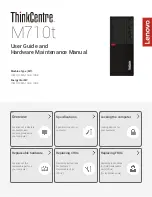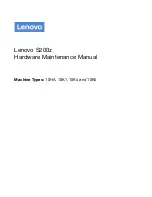
1-20 Technical Information
DESKTOP MANAGEMENT INTERFACE
The Desktop Management Interface (DMI) is the new standard for managing computer
systems. DMI is an interface between management applications and managed components
such as systems, network boards, and printers.
With DMI, a management application (such as Hewlett Packard’s Openview), provides a
simplified method to collect information from different vendors computers operating on the
network.
DMI is not a protocol but an interface that complements network protocols like the Simple
Network Management Protocol (SNMP).
DMI Components
The NEC DMI consists of two major functional components:
n
the Component Interface (CI) module
n
Windows Management Information Format (MIF) Browser.
The CI module provides the instrumentation and interface between the BIOS and the DMI
Service Layer (SL). The DMI Browser displays and manages existing attributes in the
Management Information Format (MIF) database. The Desktop Management Task Force
(DMTF) provides the DOS Service Layer, Windows Service Layer, and MIF database
structure.
Manageable Products
Manageable components are hardware, software, and peripherals installed or attached to a
desktop computer or network server. These include hard disks, word processors, CD-
ROMs, printers, operating systems, graphics boards, modems, etc. Manageable components
can come with the system or be added later. Each component supplies information to the
MIF database that contains the component's pertinent management information.
Each component may or may not include an instrumentation module in order to provide
real-time support.
CI Module
The Component Interface Module is a Windows program that provides access to your
system and its components. It runs minimized in Windows and should only be canceled if
you are uninstalling DMI.
CI module is comprised of programs written by the component manufacturer to provide
real-time attribute values to the network Service Layer as requested.
















































